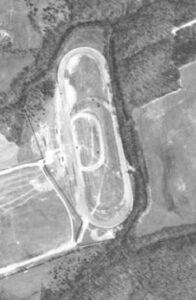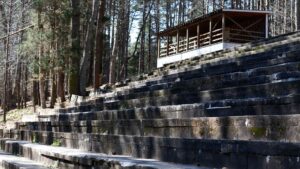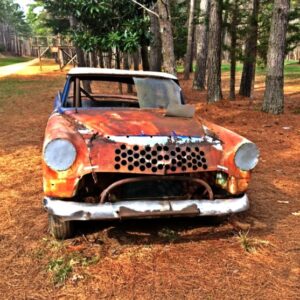Tales from the Road Series.
It’s post-world War II and recovery is slow. Rural North Carolina is still far from TV and dependent on the blistered, craggy hands of small farmers to keep life going. The larger cities, Charlotte, Greensboro, and Raleigh had all started to rise but entertainment was few and far between for those that lived far from those commercial locations.
Having deep roots in North Carolina, Virginia, and Florida, NASCAR literally grew from the ground like the “Old North State’s Pines”. Bill France, the founder of Nascar was flying home in 1947 and passed over an ⅛ mile oval horse racetrack in the open plowed fields of North Carolina. A businessman, mechanic, and race car driver, Bill found his way back to that racetrack and built a mile-long oval track for cars, and began Sunday afternoon stock car races. By September 1947 the track was open for business, and the peaceful adjoining fields soon gave way to the roar of the crowds and the raw roar of engines!
With names like “Fonty Flock” and his huge Buick Roadmaster, Red Byron who was always near with his Oldsmobile, “Fireball Roberts”, Richard Petty and his father Lee, Ned Jarret, Junior Johnson, and Louise Smith, yes the first female NASCAR driver, the locals couldn’t help but show up and watch the hometown folks race. Yep, it’s true, even the Hudson Hornet raced on this old dirt oval to the thrill of the fans. Little did any of them know that what started in this field would grow into the sport it is today.
Named after the Native American Occaneechi Tribe that used to live in the region during the 17th and 18th centuries, Occoneechee Farm became the center of attention as one of the first two Nascar tracks to open. The pressures of running Sunday schedules took its toll and eventually, the track closed down in 1968. The replacement would become Talladega Superspeedway located in Alabama. The last winner, the King himself, Richard Petty has been known to show up at the track from time to time.
52 years later, the ‘fields’ are now densely forested, and if you didn’t know where to look, you would never believe, down in Hillsborough North Carolina, is this jewel of racing history. Just off Hwy 70 Business, you will find a mysterious gravel parking area with dirt pathways leading off into the tall pine ushered trails that walk you back in time.
The old ticket counters, elevated stands, and tin fencing stand testament to the history these grounds hold. It might as well be the State emblem for every building has the “Pepsi” logo as it used to be displayed, painted in blue and red. 
It is Fall and a visit through the leaf-covered paths to the old track allows you to sit on the concrete bleachers that butt right up to the trackside and directly across from the start/finish line. Though now covered with trees in the midfield and surrounded by dense foliage, the bones of the old track stand like a relic telling stories of its past. Herbert Cates’ 1940 Chevy Coupe Super Deluxe sits for all to gaze upon, and wonder what it was like to drive in the late 1940’s, with dirt flying, going sideways in the turns? It becomes easy to reach back and feel what it must have been like, sun setting, a cold Pepsi in hand, watching the match of men/women and machines duke it out 10 feet away on that old oval dirt track.
 Now used as a hiking trail and maintained by The Historic Speedway Group, the old track has a new life. Meant to preserve as well as create a small portal back to another time, showing just how this little dirt track in the middle of a field changed the sport of stock car racing.
Now used as a hiking trail and maintained by The Historic Speedway Group, the old track has a new life. Meant to preserve as well as create a small portal back to another time, showing just how this little dirt track in the middle of a field changed the sport of stock car racing.


